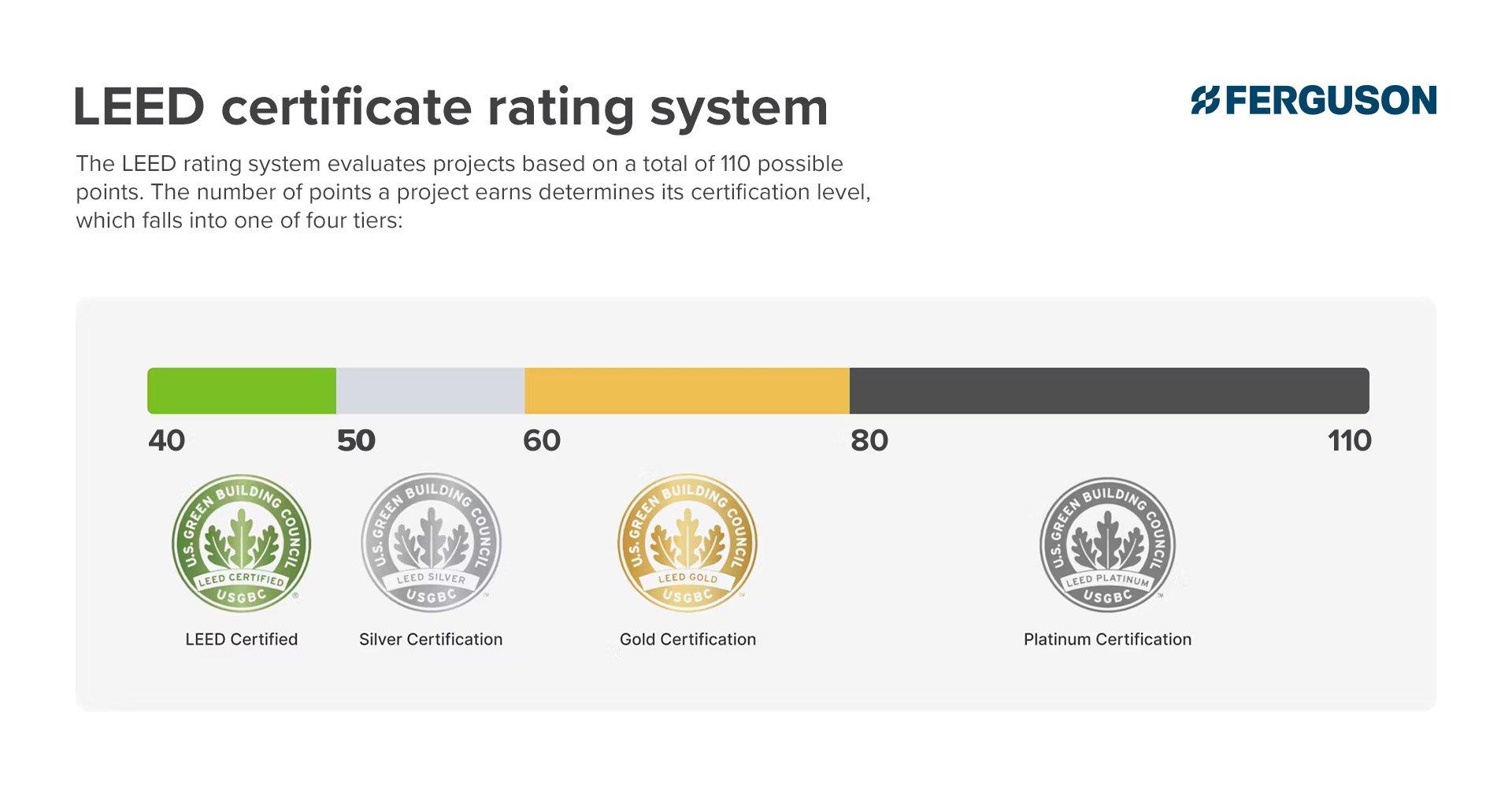What is LEED®? A guide to green building certification
For trade professionals who want to expand their customer base, sustainability is becoming increasingly important. Buildings and spaces with a smaller environmental footprint bring a number of benefits, but being able to track both the footprint and the benefits with hard numbers is critical for results.
LEED offers a way for owners and contractors to measure how efficient buildings really are.
In this quick guide, discover what LEED means for buildings, the different rating systems for certification and why it matters to your business and a sustainable future.
What is LEED certification?
The U.S. Green Building Council, or USGBC®, established Leadership in Energy and Environmental Design (LEED) in 1993 as a global rating system for building green structures. There are two components to LEED: professional accreditation and project certification.
Individuals can earn three levels of LEED accreditation: Green Associate, Accredited Professional (AP) and Fellow.
While accreditations are awarded to people, project certification refers to building and building projects. Learn the details of LEED buildings and certifications.

What is a LEED building?
A building with LEED certification has been verified and reviewed by a third party, the Green Business Certification Inc. (GBCI), as measurably high-performing and sustainable. These buildings are often water and energy efficient, reduce waste and offer positive environmental benefits, among other features.
LEED building owners may be eligible for tax credits from the federal government. And because tenants typically have lower operating costs in green buildings, owners can also earn higher rents while achieving higher occupancy rates.
Different types of buildings and spaces can be submitted for certification, including neighborhoods and cities, and each type of project has a corresponding rating system.
LEED rating system for types of construction
LEED certification addresses multiple types of construction across a wide range of industries, including schools, retail, data centers, warehouse and distribution centers, hospitality and health care. In the process of registering your project to pursue certification, you’ll select which rating system is the best fit.
Over the years, the organization has updated and added to its rating standards. LEED v5, v4 and v4.1 are the current rating systems companies can choose from, and these include the following:
Building Design and Construction, or BD+C, for buildings that are new construction or going through a large renovation
Interior Design and Construction, or ID+C, for completing a full interior update
Residential BD+C for single-family and multifamily residential buildings that are new construction or undergoing a major renovation
Cities and Communities for new cities or communities in the planning/design phase or existing communities
Building Operations and Maintenance (O+M) for buildings that are fully operational and occupied
Neighborhood Development (ND) for developing new land or redevelopment projects
Each LEED rating system has its own requirements to meet before beginning the certification process, so it’s important to choose the correct system for your construction project.
How buildings and building projects earn LEED certification
The GBCI awards credits based on adherence to sustainability, which add up to different levels of certification. Each rating system can earn a certain number of points for each requirement, and these vary across project types.
The system encompasses more than just one sustainability path for buildings—structures earn credits in six goal categories:
Reducing climate change contributions
Protecting human health
Conserving water
Enhancing biodiversity and ecosystem
Promoting sustainability
Improving the community
For example, the BD+C new construction scorecard lists eight categories: location and transportation, materials and resources, sustainable sites, indoor environmental quality, water efficiency, innovation, energy and atmosphere and regional priority.

LEED certification levels
Each category offers multiple ways to earn points, some of which are prerequisites for certification.
40-49 points earn a Certified ranking
50-59 points earn Silver
60-79 earn Gold
80 points through 110 points earn Platinum
LEED certification cost
Submitting LEED projects requires both a flat-fee registration and a certification fee based on factors that can include rating, square footage, acreage and number of buildings. USGBC members also pay less than non-members.
To use the example above, for non-members, the BD+C new construction registration fee is $1,500, the precertification flat fee per building is $5,000, and the certification fee—depending on type of rating system and building size—ranges from $0.014 to $0.057 per square foot and has minimums.
For additional charges, you can also select expedited review as well as an appeals process. To estimate what the costs for your project will be, LEED provides a pricing tool.
While the process is thorough, LEED certification can take less than a month.

Is LEED certification worth it?
The cost to obtain a building’s certification can be viewed as an investment in a number of ways. Building owners, occupants and contractors can all benefit from cost savings and client demand for sustainable spaces.
Sustainable buildings don’t just conserve energy, water and other resources. The USGBC reports that they also have lower vacancy rates, higher rents and higher-than-average market sales prices, making them an appealing investment.
These benefits will likely lead to even more demand, so contractors who build according to LEED rating systems—or have earned accreditation—will have an advantage over those who don’t.
Ferguson can help with energy efficiency
To learn more about energy efficiency in the trades and get tips to make your contracting business more sustainable, check out Green Ideas.